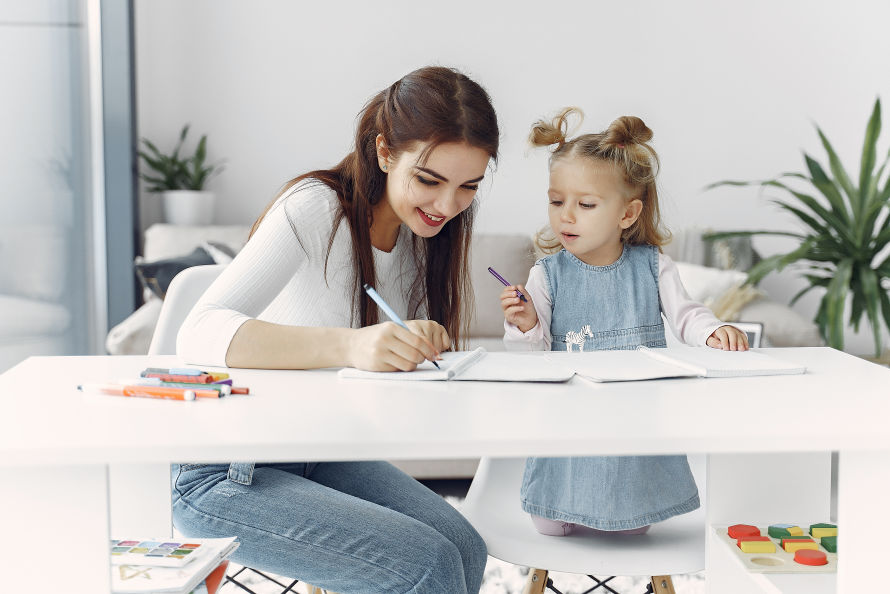
Teaching children with special needs presents unique challenges, but it’s also an opportunity to make a profound and positive impact on their lives. As educators and caregivers, it’s important to approach teaching with patience, understanding, and creativity. Children with special needs may have different learning styles, communication methods, and behavioral patterns. Tailoring your approach to meet these individual needs can make all the difference in their educational experience. Whether you’re a seasoned special education teacher or just starting, constantly enhancing your skills and strategies is key to providing the best support for these learners.
In this article, we’ll explore some tips for effectively teaching kids with special needs, drawing on best practices and expert advice. These tips aim to provide practical guidance for educators and caregivers to create a supportive, inclusive, and adaptive learning environment. Let’s dive in and discover how we can make education enriching and accessible for every child.
1. Understand Each Child’s Unique Needs
Understanding the individual needs of each child is the cornerstone of effective special needs education. This involves not only recognizing their specific challenges, whether they’re learning disabilities, physical impairments, or emotional and behavioral issues but also identifying their strengths and interests. Building a comprehensive profile of each child can guide the development of personalized learning strategies. This might include consultations with psychologists, therapists, and other specialists who can offer valuable insights into the best educational approaches for each child.
2. Seek Professional Development

Ongoing professional development is essential for educators working with children with special needs. Pursuing further education, such as a masters degree in special education online, like that offered by the College of Mount Saint Vincent, can deepen your understanding of different disabilities and effective teaching strategies. Additionally, attending workshops, seminars, and conferences provides opportunities to stay updated with the latest research and methodologies in special education. This continuous learning ensures that educators are equipped with the best tools and knowledge to support their students effectively.
3. Create a Structured Learning Environment
A structured learning environment provides a sense of security and routine that is particularly beneficial for children with special needs. This structure should extend beyond the physical layout of the classroom to include the daily schedule, rules, and routines. Clear and consistent guidelines help these children understand what is expected of them, reducing anxiety and behavioral issues. This structure, however, should also allow for flexibility to accommodate the unpredictable nature of working with children with special needs.
4. Use Multisensory Teaching Techniques
Multisensory teaching is a highly effective approach for children with special needs. This involves engaging more than one sense at a time, thereby enhancing learning and retention. For example, a lesson on plant growth could include touching different types of leaves, visually observing changes in plants, and listening to a story about gardening. By engaging multiple senses, you cater to varied learning styles and make the learning experience more engaging and accessible for children with different needs.
5. Foster an Inclusive Classroom Culture
Creating an inclusive classroom culture is about more than just physical integration; it’s about fostering a sense of belonging and acceptance. Encourage interactions and friendships between all students and celebrate each child’s uniqueness. Activities that promote cooperation and understanding can help build a supportive classroom community. This inclusive environment not only benefits children with special needs but also teaches all students valuable lessons in empathy, diversity, and acceptance.
6. Implement Individualized Education Plans (IEPs)

IEPs are vital tools in special education. They provide a roadmap tailored to each child’s specific educational needs. Developing and implementing these plans requires collaboration with a team of professionals, including special education teachers, general education teachers, and possibly therapists or medical professionals. Regularly reviewing and updating IEPs ensures that the educational strategies remain aligned with the child’s evolving needs and goals. The effectiveness of an IEP also hinges on its practicality and the resources available, making it essential for educators to be both realistic and creative in their approach.
7. Use Positive Reinforcement
Positive reinforcement is a powerful strategy in special education. It involves acknowledging and rewarding desired behaviors, which reinforces their recurrence. This can be particularly effective for children with special needs, who may require more encouragement and recognition to build confidence and motivation. Simple gestures like verbal praise, a smile, or a sticker can be impactful. It’s crucial, however, to understand what each child finds reinforcing because this can vary greatly from one child to another.
8. Incorporate Assistive Technology
Assistive technology can be a game-changer in special education. It includes a wide range of tools, from simple devices like pencil grips to more complex systems like speech-generating devices. These technologies can help children with special needs overcome learning barriers and engage more effectively in the classroom. For instance, text-to-speech software can aid children with reading difficulties, while communication boards can assist non-verbal children in expressing themselves. Keeping abreast of new technologies and being creative in their application can significantly enhance learning experiences for these students.
9. Encourage Communication and Self-Expression

Facilitating communication and self-expression is crucial for children with special needs. This involves creating an environment where children feel safe and encouraged to express their thoughts and feelings. Utilizing various communication methods, such as picture exchange systems, sign language, or technology aids, can be helpful. Additionally, providing opportunities for creative expression through art, music, and play can enable children to convey their experiences and emotions in non-verbal ways.
10. Be Patient and Flexible
Patience and flexibility are key virtues when teaching children with special needs. Progress may be slow, and plans may need constant adjustment. Being patient means recognizing and celebrating small achievements and understanding that setbacks are part of the learning process. Flexibility involves adapting teaching methods and expectations to meet the changing needs of each child. It’s about finding what works best for each student and being willing to alter plans and approaches as needed.
Conclusion
Teaching children with special needs requires a thoughtful, tailored approach that recognizes and respects each child’s individuality. By implementing these tips, educators and caregivers can create an enriching learning environment that supports the diverse needs of their students. It’s about celebrating each child’s unique journey, encouraging their strengths, and providing the tools and support they need to flourish. Teaching kids with special needs isn’t just about education; it’s about nurturing their potential and helping them navigate the world with confidence and independence.








